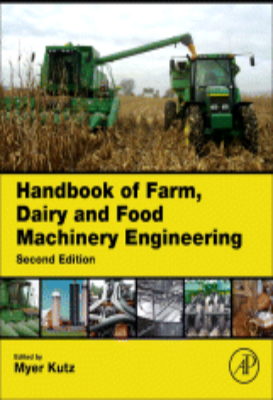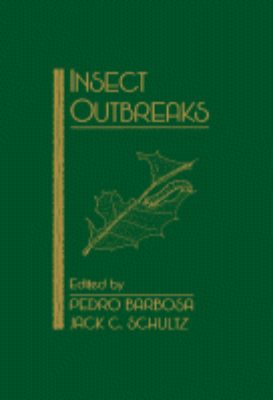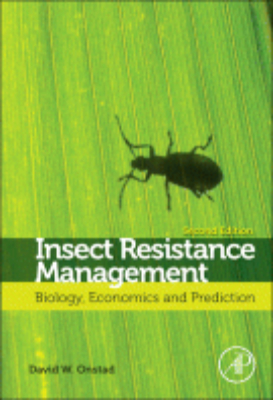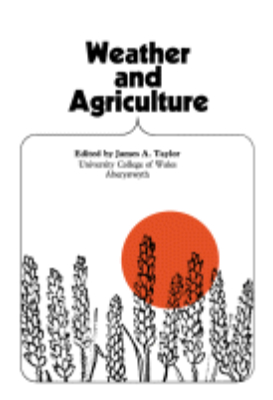Brinker, Piermattei, and Flo’s Handbook of Small Animal Orthopedics and Fracture Repair
“‘
| Publication Language |
English |
|---|---|
| Publication Access Type |
Premium |
| Publication Author |
* |
| Publisher |
Elsevier |
| Publication Year |
* |
| Publication Type |
ebooks |
| ISBN/ISSN |
* |
| Publication Category |
Animal Science |
Kindly Login to ICAR Digital Library Portal.
Related products
A History of Weed Science in the United States
"It is important that scientists think about and know their history - where they came from, what they have accomplished, and how these may affect the future. Weed scientists, similar to scientists in many technological disciplines, have not sought historical reflection. The technological world asks for results and for progress. Achievement is important not, in general, the road that leads to achievement. What was new yesterday is routine today, and what is described as revolutionary today may be considered antiquated tomorrow. Weed science has been strongly influenced by technology developed by supporting industries, subsequently employed in research and, ultimately, used by farmers and crop growers. The science has focused on results and progress. Scientists have been--and the majority remain--problem solvers whose solutions have evolved as rapidly as have the new weed problems needing solutions. In a more formal sense, weed scientists have been adherents of the instrumental ideology of modern science. That is an analysis of their work, and their orientation reveals the strong emphasis on practical, useful knowledge; on know how. The opposite, and frequently complementary orientation, that has been missing from weed science is an emphasis on contemplative knowledge; that is, knowing why. This book expands on and analyzes how these orientations have affected weed sciences development. Key Features. The first analytical history of weed science to be written. Compares the development of weed science, entomology and plant pathology. Identifies the primary founders of weed science and describes their role"
Agricultural Sustainability
Collaboratively written by top international experts and established scientists in various fields of agricultural research, this book focuses on the state of food production and sustainability; the problems with degradation of valuable sources of land, water, and air and their effects on food crops; the increasing demand of food resources; and the challenges of food security worldwide. The book provides cutting edge scientific tools and methods of research as well as solid background information that is accessible for those who have a strong interest in agricultural research and development and want to learn more on the challenges facing the global agricultural production systems.
Handbook of Farm, Dairy and Food Machinery Engineering
Handbook of Farm, Dairy and Food Machinery Engineering is the essential reference for engineers who need to understand those aspects of the food industry from farm machinery to food storage facilities to the machinery that processes and packages our foods. The process of getting food from "farm to fork," as the saying goes, involves more than planting, harvesting, shipping, processing, packaging and distributingthough those are all key components. Effective and efficient food delivery systems are built around processes that maximize the effort while minimizing cost, time, and resource depletion. This comprehensive reference is for engineers who design and build machinery and processing equipment, shipping containers, and packaging and storage equipment. It includes cutting-edge coverage of microwave vacuum application in grain processing, cacao processing, fruit and vegetable processing, ohmic heating of meat, facility design, closures for glass containers, double seaming, and much more.
Herbivorous Insects
Herbivorous Insects: Host-Seeking Behavior and Mechanisms addresses mechanisms of searching behavior leading ultimately to host location of herbivorous insects. It is divided into four sections, wherein the first two sections deal with neurophysiology and the diversity of behavioral induction cues. The third section covers the searching mechanisms as affected by insects' breadth of diet. The last part examines the evolutionary analysis of the behavioral and physiological adaptations in insect/host plant relations. This book starts with an introduction to the chemical sensory system as it relates to host selection in general. This is followed by considerable discussions on host-seeking behavior and allied patterns in behavior. This text also includes the study of oviposition behavior in butterflies belonging to Papilionidae. The third section presents host selection and colonization by three insects within the saprophage-predator continuum, namely, Hylurgopinus rufipes, Scolytus multistriatus, and Pissodes strobi. The behaviors by which certain oligophagous insects locate and select food plants are also considered. The concluding part addresses the unifying theme and the diversity of responses of phytophagous insects to plants. The book provides direction toward developing a unifying theme and improving the ability to unravel the complexities of insect/plant interactions. Behaviorists, ecologists, entomologists, evolutionary biologists, and physiologists will find this book invaluable.
Insect Outbreaks
FROM THE PREFACE: The abundance of insects can change dramatically from generation to generation; these generational changes may occur within a growing season or over a period of years. Such extraordinary density changes or "outbreaks" may be abrupt and ostensibly random, or population peaks may occur in a more or less cyclic fashion....The goal of this book is to update and advance current thinking on the phenomenon of insect outbreaks. The contributors have reviewed relevant literature in order to generate a synthesis providing new concepts and important alternatives for future research. More importantly, they have presented new ideas or syntheses that will stimulate advances in thinking and experimentation.
Insect Pests of Potato
"Insect Pests of Potato: Biology and Management provides a comprehensive source of up-to-date scientific information on the biology and management of insects attacking potato crops, with an international and expert cast of contributors providing its contents. This book presents a complete review of the scientific literature from the considerable research effort over the last 15 years, providing the necessary background information to the subject of studying the biology management of insect pests of potatoes, assessment of recent scientific advances, and a list of further readings. This comprehensive review will be of great benefit to a variety of scientists involved in potato research and production, as well as to those facing similar issues in other crop systems. Key Features. Written by top experts in the field, this is the only publication covering the biology, ecology and management of all major potato pests. Emphasizes ecological and evolutionary approaches to pest management. Summarizes information from hard-to-get publications in China, India, and Russia"
Insect Resistance Management: 2014
"Neither pest management nor resistance management can occur with only an understanding of pest biology. For years, entomologists have understood, with their use of economic thresholds, that at least a minimal use of economics was necessary for proper integrated pest management. IRM is even more complicated and dependent on understanding and using socioeconomic factors. The new edition of Insect Resistance Management addresses these issues and much more. Many new ideas, facts and case studies have been developed since the previous edition of Insect Resistance Management published. With a new chapter focusing on Resistance Mechanisms Related to Plant-incorporated Toxins and heavily expanded revisions of several existing chapters, this new volume will be an invaluable resource for IRM researchers, practitioners, professors and advanced students. Authors in this edition include professors at major universities, leaders in the chemical and seed industry, evolutionary biologists and active IRM practitioners. This revision also contains more information about IRM outside North America, and a modeling chapter contains a large new section on uncertainty analysis, a subject recently emphasized by the U.S. Environmental Protection Agency. The final chapter contains a section on insecticidal seed treatments. No other book has the breadth of coverage of Insect Resistance Management, 2e. It not only covers molecular to economic issues, but also transgenic crops, seed treatments and other pest management tactics such as crop rotation. Major themes continuing from the first edition include the importance of using IRM in the integrated pest management paradigm, the need to study and account for pest behavior, and the influence of human behavior and decision making in IRM. Key Features. Provides insights from the history of insect resistance management (IRM) to the latest science. Includes contributions from experts on ecological aspects of IRM, molecular and population genetics, economics, and IRM social issues. Offers biochemistry and molecular genetics of insecticides presented with an emphasis on recent research. Encourages scientists and stakeholders to implement and coordinate strategies based on local social conditions"
The Science of Grapevines: Anatomy and Physiology
Written by a recognized expert and based on his experience in teaching the subject to students with a variety of educational backgrounds, The Science of Grapevines: Anatomy and Physiology is the only book to comprehensively explore the physiology of the grapevine as it occurs around the world.While other books have focused on the vines of specific regions, the globalization of the wine industry and the resulting increase of lands around the world being used for grapevine cultivation have left a gap in information. This book addresses not only the specific issues and concerns of grapevines from regions around the world, but includes important emerging topics such as global climate change, water relations, temperature effect and more. Key Features * Provides global coverage of grapevines, including the regional differences, similarities, challenges and potential changes* Avoids jargon while bringing the reader into this important aspect of the wine industry * Classroom proven by a leading expert in grapevine anatomy
Tomato Diseases
"Following the successful first edition, this revised edition, contains 680 pages and 900 color photos and diagrams, covering every imaginable symptom, pest and disease affecting the tomato. This is the definitive work on the diseases and disorders of the tomato, a worldwide crop of significant economic importance. Key Features. Includes over 300 high quality colour photographs. Explains how to examine and identify diseases of the foliage, roots, neck, stalk and fruit. Enables readers to diagnose and combat both parasitic and non-parasitic diseases of the tomato plant and fruit"
Weather and Agriculture
Weather and Agriculture presents the major principles involved in the integrated study of weather and agriculture. The book is divided into three sections. Part I discusses the aspects of environmental factors and their validity and measurement. Part II presents a selection of the weather hazards and their relation to agricultural practice. The last section focuses on productivity, the efficient maximization of available resources towards economic ends. Meteorologists, agriculturists, and pedologists will find the book invaluable.











